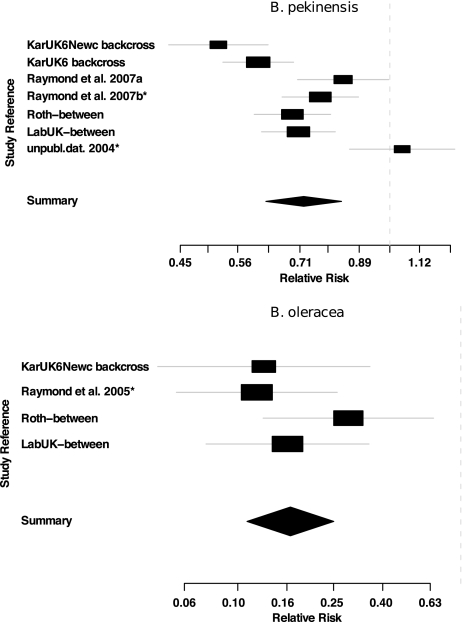Figure 3.
Random effects meta-analyses of studies using diverse methods to estimate the fitness costs of resistance to Bacillus thuringiensis in diamondback moth feeding on two host plant species, B. pekinensis and B. oleracea. Fitness costs were calculated as the relative risk of survival to adulthood for resistant and susceptible larvae. The horizontal lines indicate the 95% confidence interval for each study, and the point estimate is given by a square whose area is inversely proportional to the standard error of the estimate. The summary relative risk estimated from the whole data set is drawn as a diamond with horizontal limits at the 95% CLs and height inversely proportional to its standard error. Experiments that used revertant susceptible lines to calculate fitness costs are denoted with an asterisk *; the studies denoted by ‘backcross' used genetic homogenization techniques as described in the Materials and methods; all other studies were between-population designs that did not control for genetic background.

